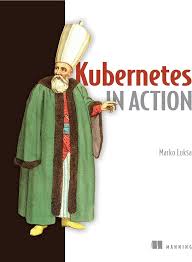Kubernetes, an open-source platform for automating deployment, scaling, and management of containerized applications, has revolutionized the way we build and deploy software. This white paper delves into the core concepts, features, and best practices of Kubernetes, drawing insights from the book "Kubernetes in Action." By understanding the fundamental principles of Kubernetes, you can effectively leverage its power to build scalable, resilient, and efficient applications.
White Paper: Mastering Kubernetes: A Deep Dive into Container Orchestration
Abstract
Kubernetes, an open-source platform for automating deployment, scaling, and management of containerized applications, has revolutionized the way we build and deploy software. This white paper delves into the core concepts, features, and best practices of Kubernetes, drawing insights from the book "Kubernetes in Action." By understanding the fundamental principles of Kubernetes, you can effectively leverage its power to build scalable, resilient, and efficient applications.
Introduction
Kubernetes, often referred to as K8s, has emerged as the de facto standard for container orchestration. It provides a robust and flexible platform for managing containerized applications across multiple nodes. This white paper aims to provide a comprehensive overview of Kubernetes, its key components, and its practical applications.
Key Concepts of Kubernetes
- Pods: The basic unit of deployment in Kubernetes, consisting of one or more containers.
- Nodes: Physical or virtual machines that run containers.
- Clusters: A group of nodes managed by Kubernetes.
- Labels and Selectors: Mechanisms for organizing and identifying resources.
- Namespaces: Isolating resources within a cluster.
- Services: A way to expose applications running on pods.
- Ingress Controllers: Routing traffic to services within a cluster.
Core Components of Kubernetes
- kube-apiserver: The control plane component that exposes the Kubernetes API.
- kube-controller-manager: Manages the state of the cluster and ensures that resources are deployed and running as expected.
- kube-scheduler: Assigns pods to nodes based on resource constraints and scheduling policies.
- kubelet: Manages the lifecycle of pods on each node.
- kube-proxy: Manages network traffic within the cluster.
Best Practices for Kubernetes
- Container Image Best Practices: Build efficient and secure container images.
- Resource Requests and Limits: Set appropriate resource limits and requests to optimize resource utilization.
- Network Policies: Configure network policies to control traffic flow within the cluster.
- Persistent Storage: Use persistent volumes and persistent volume claims to store data beyond the lifecycle of pods.
- Monitoring and Logging: Implement effective monitoring and logging solutions to track the health of your Kubernetes cluster.
- Security Best Practices: Secure your Kubernetes cluster by implementing role-based access control, network security policies, and image scanning.
Real-World Applications of Kubernetes
- Microservices Architecture: Deploy and manage microservices applications.
- Continuous Delivery and Deployment: Automate the deployment pipeline.
- Serverless Computing: Run functions without managing servers.
- Machine Learning and AI: Deploy and scale machine learning models.
- Edge Computing: Deploy applications closer to the data source.
Conclusion
Kubernetes has revolutionized the way we deploy and manage applications. By understanding the core concepts and best practices, you can effectively leverage Kubernetes to build scalable, reliable, and efficient applications. By combining the theoretical knowledge from "Kubernetes in Action" with hands-on experience, you can become a proficient Kubernetes administrator and developer.
References
- Jones, C., & McCrory, B. (2017). Kubernetes in Action. Manning Publications.
- Kubernetes Documentation:
By embracing the power of Kubernetes, you can accelerate your software delivery pipeline, improve application performance, and drive innovation.
